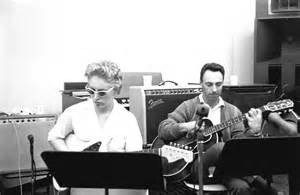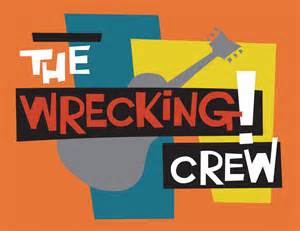 aNewDomain — In the 1960s, the British Invasion dominated the pop charts with songs from bands like The Beatles and The Rolling Stones. These bands changed the face of music and defined the era.
aNewDomain — In the 1960s, the British Invasion dominated the pop charts with songs from bands like The Beatles and The Rolling Stones. These bands changed the face of music and defined the era.
Meanwhile, in Detroit, the Motown sound of Stevie Wonder, Marvin Gaye, The Supremes, Smokey Robinson and the Jackson 5 amassed huge chart-topping hits and grooved those lists with awesome instrumentalists.
At the same time, there was that West Coast sound, all hot rods, surfing and beach rage tunes included.
On the surface, these three sources of 1960s sound had little in common. But really they shared not just the same epoch, but also many of the same musicians — a largely uncredited group of LA studio musicians who played the instruments on dozens and dozens of ’60s albums, by such musicians as Frank Sinatra to the Byrds to The Beach Boys to The Mamas and the Papas and more.
The band semi-secretly played all the instruments on literally hundreds of famous Top 40 hit songs during the ’60s and early ’70s.
The Wrecking Crew has long and deep associations with some of the biggest names in rock.
They are at once the least-known and most-heard supergroup ever — and are all over many of rock ‘n’ roll’s most iconic classics.
If you love rock, you absolutely must see The Wrecking Crew documentary.
In it, you’ll learn how famed producer Phil Spector occasionally employed these musicians as the Phil Spector Wall of Sound Orchestra, and they have alternately been known as “The Clique” and the “First Call Gang,” according to Kent Hartman’s excellent book, The Wrecking Crew: The Inside Story of Rock and Roll’s Best-Kept Secret (2012/2013).
You can hear The Wrecking Crew musicians on such Brian Wilson and Beach Boys’ productions as Good Vibrations, California Girls and the album Pet Sounds. Members of the band played on the Byrds’ single Mr. Tambourine Man, too, and countless other singles.
Some of The Wrecking Crew did eventually become famous in their own right — others became famous in smaller, tonier circles.
As an example, Paul McCartney’s favorite bass player was reportedly The Wrecking Crew’s intriguing Carol Kaye (pictured above).
Kaye was the clandestine group’s only female musician, who the documentary claims made more money than the president in her prime. It was she who devised the clever souped-up bass line for Sonny and Cher’s “The Beat Goes On,” the documentary reports.
Kaye’s father abandoned Kaye and her mother in her childhood, and she eventually landed on welfare. When a door-to-door guitar salesman knocked at their door, Kaye’s mother bought a used $10 guitar for her daughter and the rest was music history, so far as Kaye is known to history.
Wrecking Crew members who later broke out and achieved solo fame include guitarist Glen Campbell and pianists Leon Russell and Mac Rebennack (Dr. John).
Two of The Wrecking Crew’s ranks — drummers Hal Blaine and Earl Palmer — actually ended up as the first sidemen inductees at The Rock and Roll Hall of Fame’s inauguration back in 2000.
And the whole band finally got recognized as part of the Musicians Hall of Fame eight years ago, in 2007.
There is so much more to tell. But why ruin such a terrific movie?
The Bottom Line
During my viewing of the film on Netflix, I was so moved by this lovingly-made documentary with its many riffs and hooks.
No matter what your age, I promise you this: If you’re into rock and rock classics, you’ll forever be grateful you took the time to give “The Wrecking Crew” a long look. Thank me later.
For aNewDomain, I’m James Kelly.
Image credit: “Gold Star Studios – Wrecking Crew” by Source (WP:NFCC#4). Licensed under Fair use via Wikipedia.














